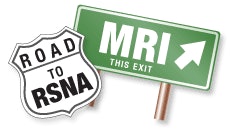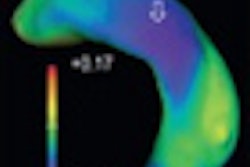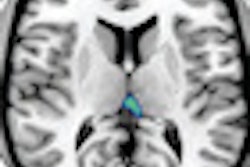MRI is expected to draw considerable attention on two main fronts at this year's RSNA meeting. One is in the realm of integrated PET/MRI, where Swiss researchers will demonstrate their work on a clinical prototype. The second is in the use of MRI for diagnosing Alzheimer's disease and other cognitive disorders.
With respect to PET/MRI, the emerging technology will be highlighted in a presentation on Sunday, November 28, by Osman Ratib, MD, PhD, head of the radiology department at the University Hospital of Geneva in Switzerland (10:55 a.m.-11:05 a.m., SSA18-02, Room S505AB).
The prototype whole-body scanner combines a 3-tesla MRI device with a time-of-flight PET scanner. It uses a single patient bed that moves back and forth between the scanners, designed to allow sequential acquisition of coregistered MRI and PET images.
"In my opinion, it most closely allies the two functional imaging techniques, so you can have functional MRI, perhaps with nanoprobes, together with the PET component, which has more specific tracers to assess cancers and other applications, perhaps in cardiology and neurology," said Homer Macapinlac, MD, chairman of RSNA's nuclear medicine subcommittee and chairman of the nuclear medicine department at the MD Anderson Cancer Center at the University of Texas in Houston.
So far, clinical results from the hybrid imaging technique have been evaluated in oncology applications and then compared to standard PET/CT images, but already there are expectations that PET/MRI can be beneficial beyond oncological uses.

In the area of musculoskeletal imaging, topics scheduled for this year's annual meeting include new research using 3-tesla diffusion-tensor imaging to study peripheral nerves adjacent to soft-tissue tumors (Sunday, November 28, 11:25 a.m.-11:35 a.m., SSA14-05, Room E451A).
In addition, new research will show how contrast-enhanced MRI can be used to assess microvascular characteristics in head and neck cancer patients without exposing them to unnecessary radiation (Sunday, November 28, 11:45 a.m.-11:55 a.m., SSA16-07, Room N229).
In the lineup of refresher courses, RSNA will offer "Unique Musculoskeletal Issues in Children" on Sunday, November 28 (2:00 p.m.-3:30 p.m., RC104, Room E450B). This section will focus on MR images of normal bone marrow in pediatric skeletons at various ages of maturity and will illustrate how MRI findings associated with common disorders can affect bone marrow of children.
On Monday, November 29, a refresher course will present information on implants and devices related to safe practices using 3-tesla MRI for maximum patient care and management. "Optimize Your Body MR Practice -- MR Safety Update 2010" also will compare safety profiles of intravenous gadolinium-based contrast agents and cover practice guidelines for the prevention of nephrogenic systemic fibrosis (8:30 a.m.-10:00 a.m., RC229A and B, Room N229).
Breast MRI will be the focus on Tuesday, November 30, in a refresher course detailing new approaches to MRI and MR spectroscopy. Presenters will offer an overview of the technical aspects and review current evidence of the diagnostic utility of both technologies. In addition, new approaches to diffusion-weighted MRI and dynamic contrast-enhanced MRI in relation to breast imaging will be discussed, as will the clinical role of breast MRI for screening and other diagnostic applications (4:30 p.m.-6:00 p.m., RC421A and B, Room E451B).
Below are just a few more highlights of the many novel MRI scientific papers scheduled for presentation at this year's annual meeting.
To view the complete RSNA scientific program and abstracts directly, visit the conference's website by clicking here.




















